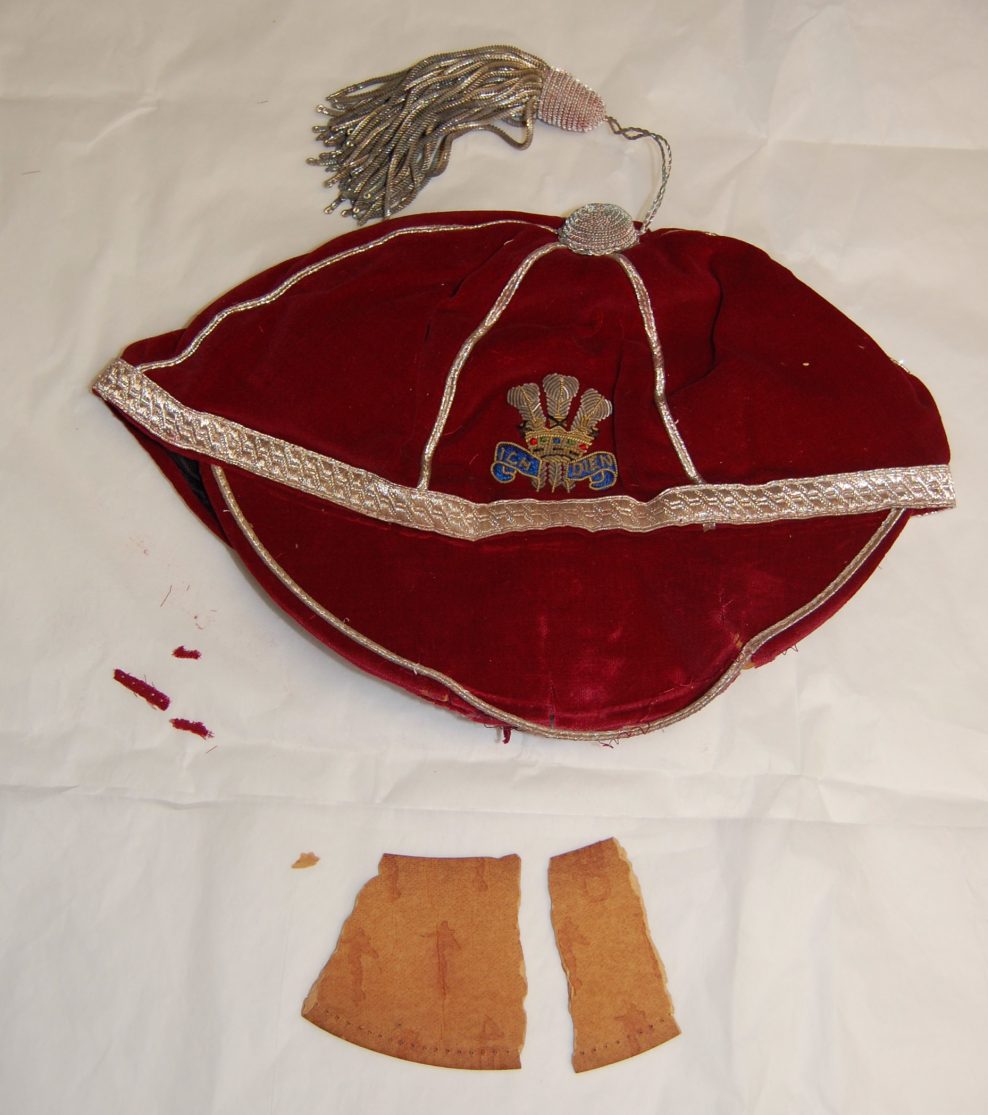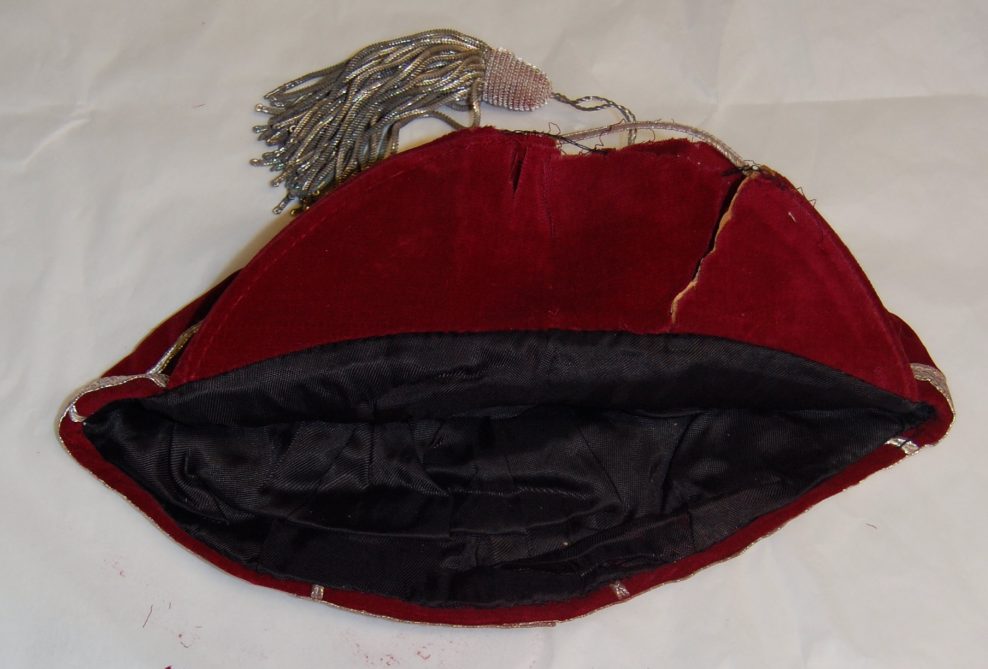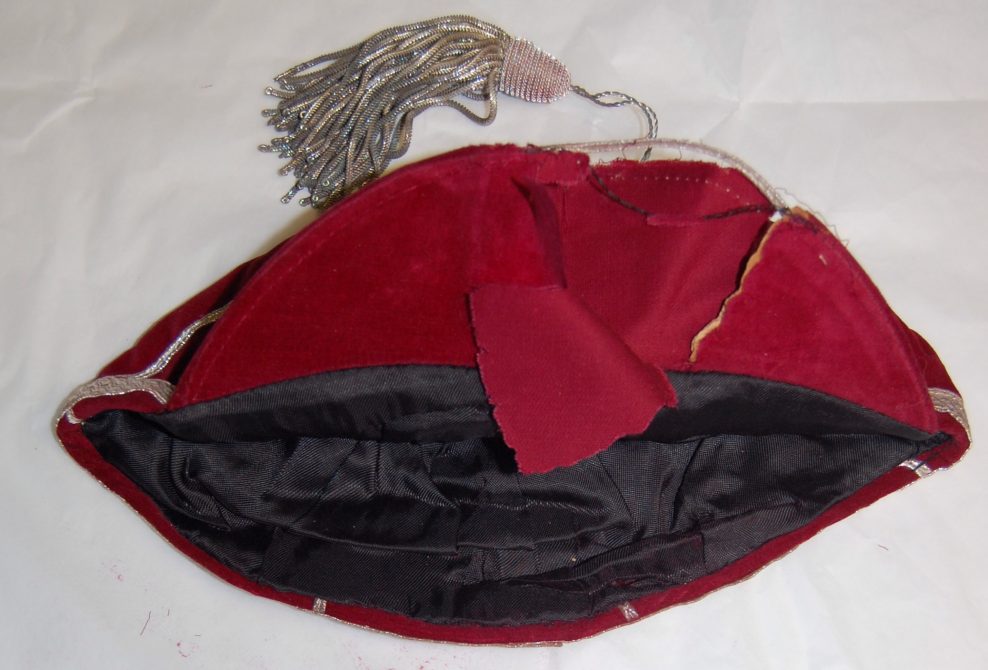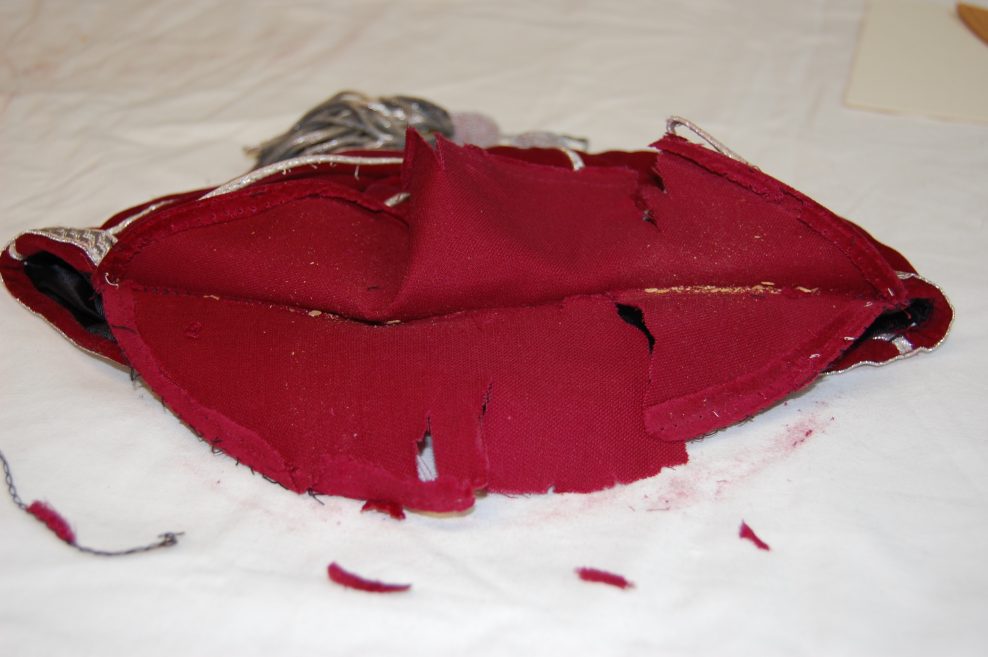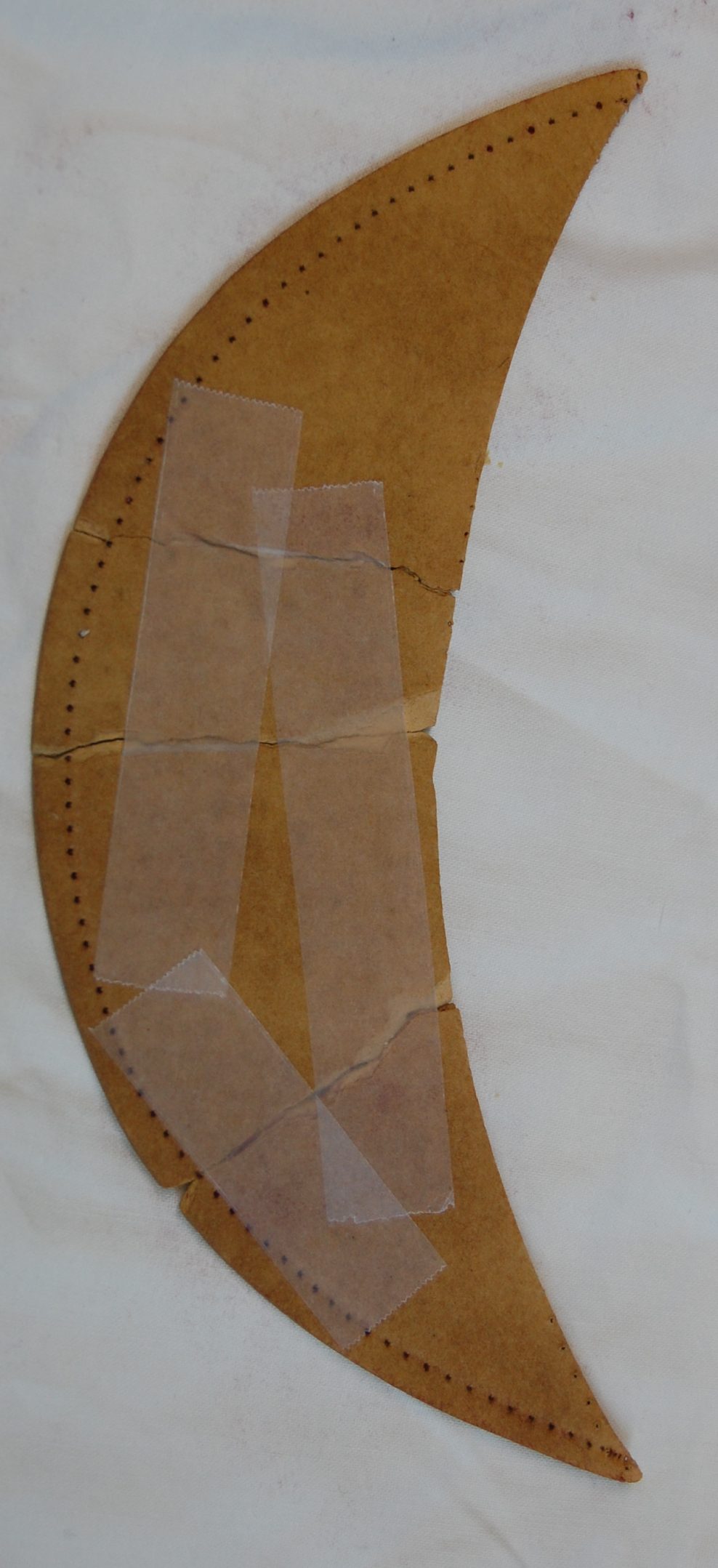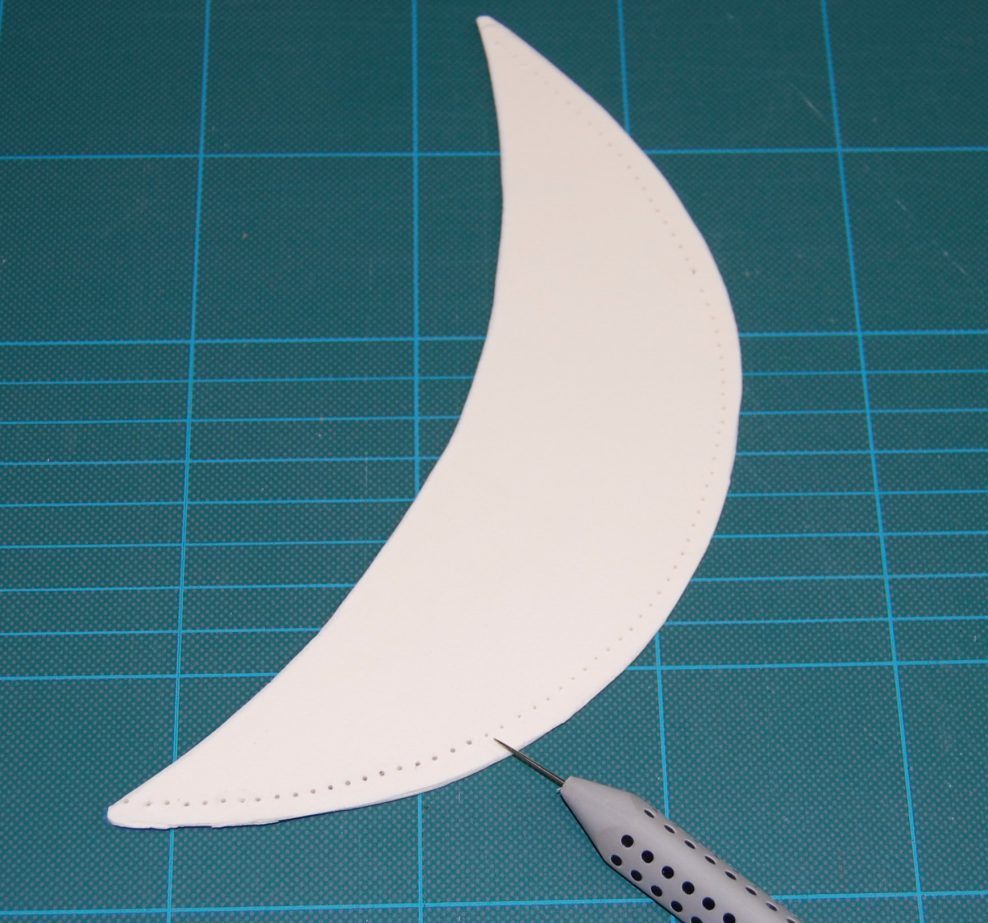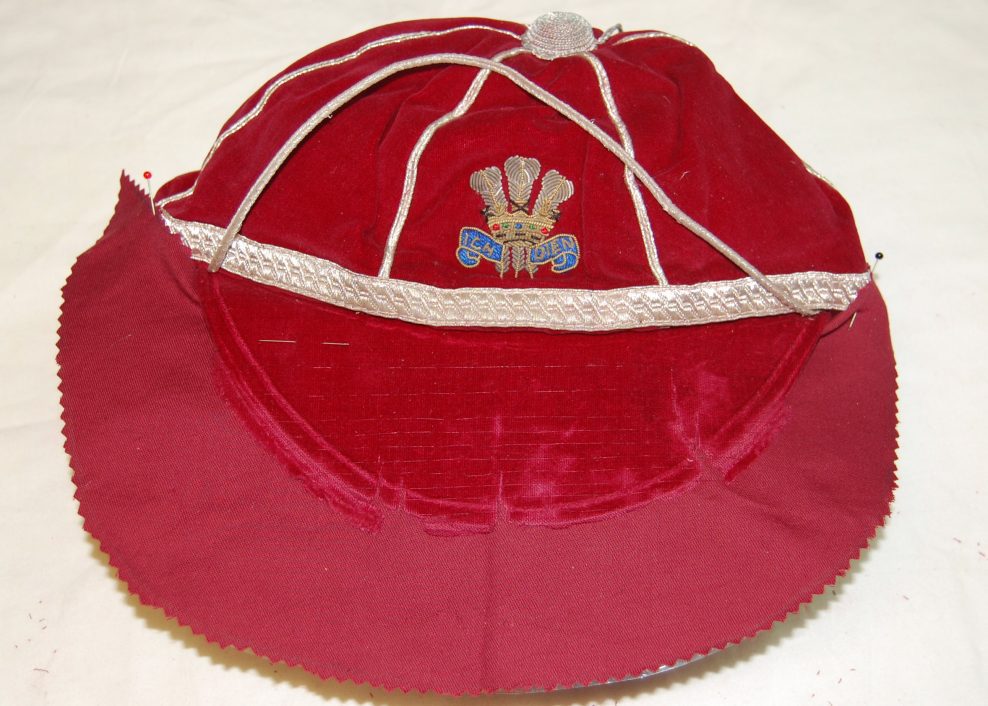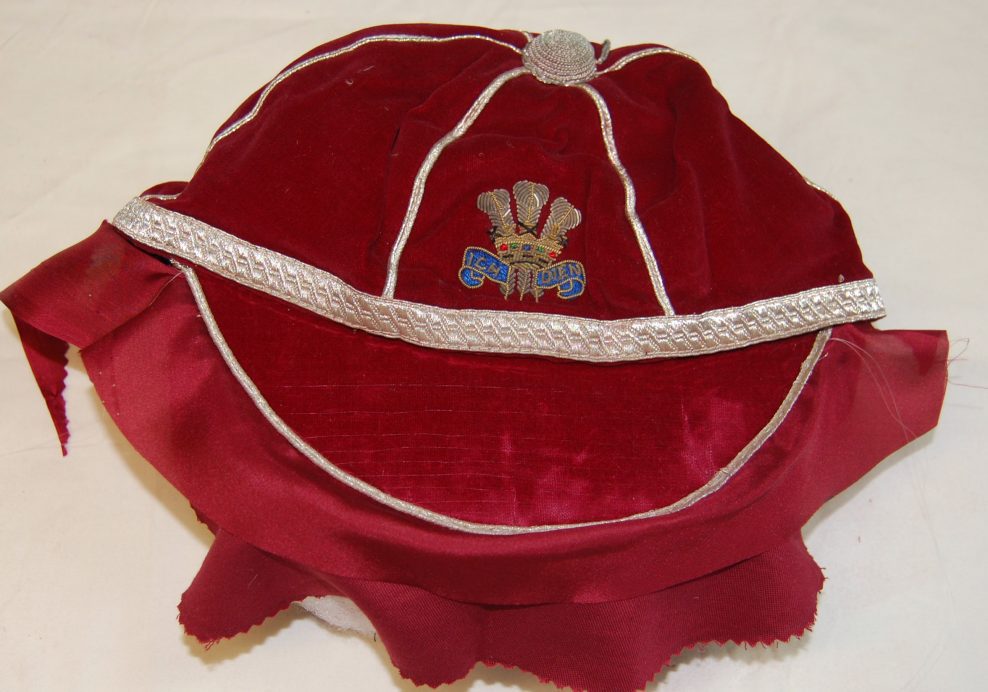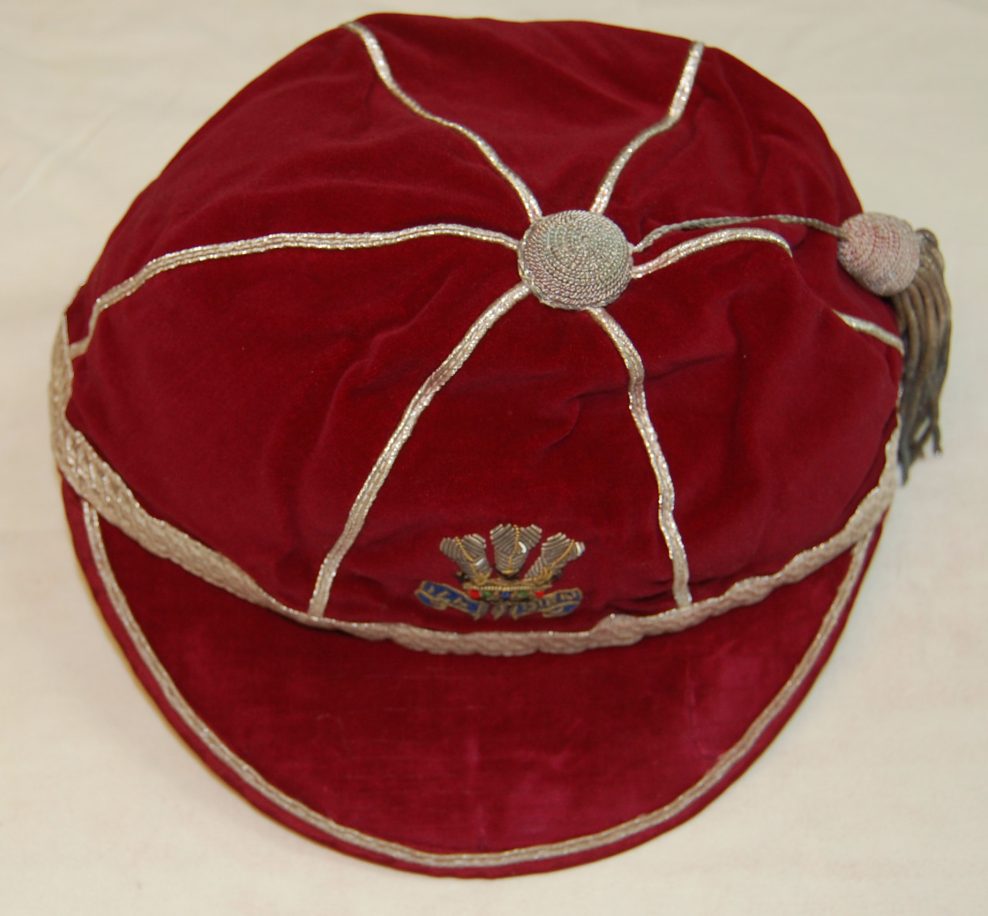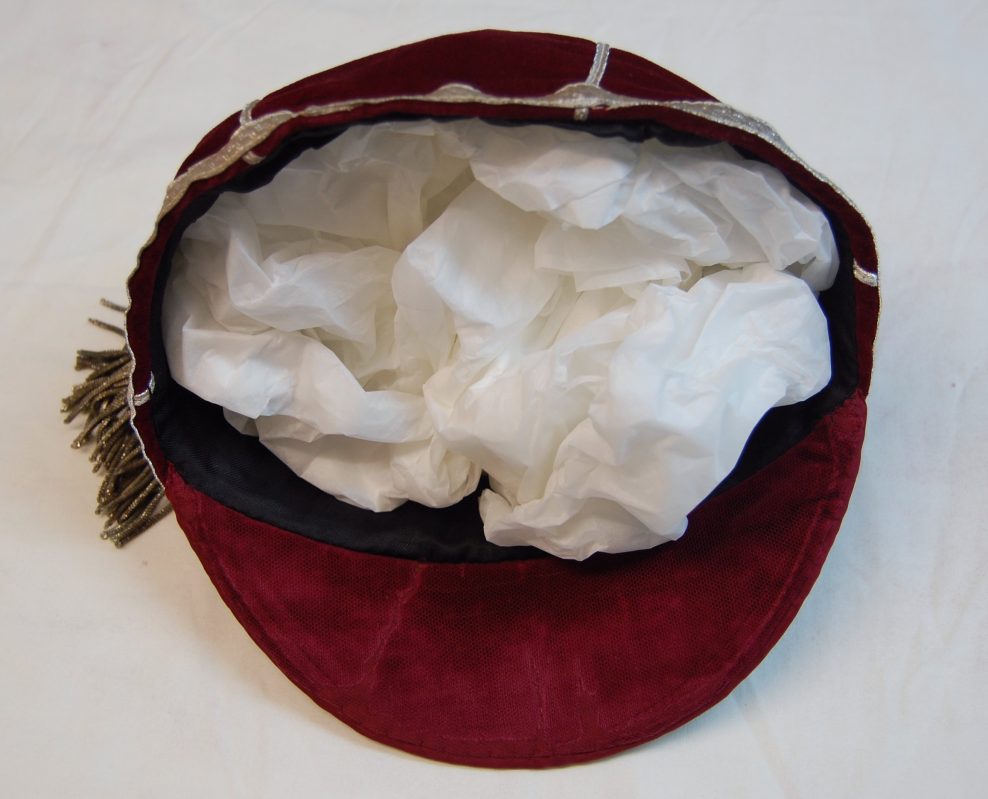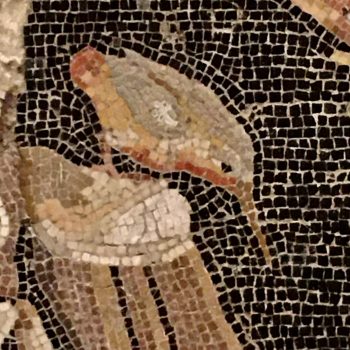Projects
International Rugby cap awarded to Mark Jones in 1987 playing for Wales against Scotland
A much-prized international rugby cap had suffered damage in storage and needed conservation treatment before being framed and glazed for display
An international Wales rugby cap made from dark red velvet. The front segment of the cap is embroidered with the Prince of Wales feathers worked in gold and silver purl and green, blue, and red threads. The cap is trimmed with silver braid. The top is finished with a whorl covered with silver purl and a heavy tassel made from wide and narrow silver purl. The cap is lined with black twill weave fabric with a plain weave undyed name tape labelled MARK JONES written in ballpoint pen, a white fabric label stamped 7 ½ and a second white fabric label marked 56% COTTON 44% VISCOSE DRY CLEAN ONLY MADE IN ENGLAND.
The main body of the cap was in fair condition. The pasteboard acting as a stiffener in the peak had become brittle and had broken into four pieces, the narrow silver braid had come un-stitched, and the upper and lower layers of velvet were rubbed and split in several places.
The brief was to conserve and repair the peak of the cap prior to the cap’s being framed and glazed for display.
The remaining stitches holding the velvet, silver braid and pasteboard layers of the peak together were clipped. The pasteboard pieces were removed. They were temporarily repaired with archival document repair tape. The original pasteboard was of non-archival quality and was likely to continue to disintegrate; the decision was taken therefore to replace it. Using the original pasteboard as a template, a piece of acid-free 100% cotton rag board of a suitable thickness was cut to shape. Holes to match the machine stitching holes in the original stiffener were made with the aid of a thick sharp needle.
The damaged velvet layers were backed with shaped pieces of dyed new cotton sateen fabric sewn in place with fine dyed polyester thread. The velvet of the lower layer was also covered with a panel of fine gauge dyed nylon net, with stitches worked in fine dyed polyester thread through the cracks and holes in the velvet to protect the remaining pile from abrasion.
The velvet of the upper layer was edged with a strip of dyed plain weave medium weight silk fabric, cut on the bias, to protect the fragmentary velvet where it would wrap around the peak stiffener.
The new stiffener was inserted between the two conserved velvet layers.
The narrow silver braid was re-sewn in place along the edge of the upper layer over the join of the velvet and the silk fabrics. The stitches were worked in dyed fine polyester thread, passing through the fabrics and the holes made in the stiffener.
The excess cotton fabric was trimmed away, and the cotton and silk fabric turnings were wrapped round to the reverse of the stiffener and sewn in place, again using the holes in the stiffener
The cotton fabric and the nylon net turnings on the lower velvet layer were turned under. The edge of the layer was slip stitched to the turnings of the upper layer with fine dyed polyester thread.
Condition after conservation
The cap is in a much sturdier condition than before. The new peak stiffener supports the repaired velvet layers well. The original pieces of pasteboard were returned to the owner with the cap so they could be sealed into the back of the cap’s new display case..
